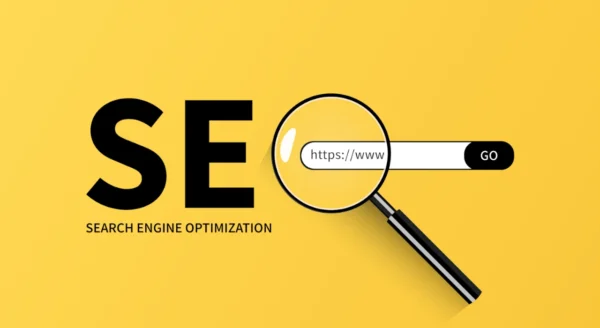Dr. Mihir Joshi
If you’re running a hospital, clinic, or specialty healthcare practice, chances are you’re already sitting on a goldmine of data—but are you using it effectively? With the rising cost of digital advertising and increasing patient expectations, the most successful healthcare marketers are those who know exactly who to target, how to engage them, and when to reach out.
Most healthcare organisations have massive amounts of data stored in their CRM (Customer Relationship Management) systems, EMR (Electronic Medical Records), and patient engagement platforms—but few are truly leveraging it to drive marketing results.
Let’s break down how you can extract meaningful insights from your existing data, use it to improve patient acquisition and retention, and outperform your competitors without spending a fortune on marketing campaigns that don’t convert.
Where Is Your Data Hiding? Unlocking Insights from Your CRM & EMR
Every hospital or clinic collects thousands of patient interactions daily, but most of it goes unused. Here are the most important data sources you should be tapping into:
1. Patient Demographics (Who Is Your Ideal Patient?)
- Age, gender, and location
- Employment & insurance status
- Family size and household income (if applicable)
- Language preferences
Marketing Application: If you know that 80% of your knee replacement patients are over 55, you can stop wasting money on ads targeting 25-year-olds and focus on high-converting audiences.
2. Appointment Booking Patterns (When Are Patients Most Engaged?)
- How long it takes a patient to schedule an appointment after visiting your website
The busiest appointment days/times in your clinic
No-show and cancellation rates
Marketing Application: If no-shows spike on Mondays, an automated reminder text or email on Sunday could increase attendance rates and reduce revenue loss.
3. Referral & Lead Sources (What’s Driving New Patients?)
- How did this patient hear about your hospital/clinic?
- Was it a referral from another doctor?
- Did they find you via Google search, social media, or an ad?
Marketing Application: If 60% of new patients come from Google searches, it’s time to double down on SEO rather than spending thousands on underperforming ads.
4. Treatment History & Popular Procedures (What Are Patients Actually Interested In?)
- Which services are most commonly booked?
- Seasonal trends (e.g., more flu shots in winter, more sports injuries in summer)
- The average number of visits before a patient completes treatment
Marketing Application: If you notice a drop in Botox appointments in your dermatology practice, targeted Google Ads or Instagram promotions can help increase bookings.
5. Patient Satisfaction Scores & Feedback (Are You Meeting Expectations?)
- Post-appointment surveys & NPS (Net Promoter Score) ratings
- Common complaints & pain points
- Google & Facebook reviews
Marketing Application: If patients keep complaining about long wait times, highlighting “Fast Appointments – 30-Min Wait Time Guarantee” in your ads could improve engagement.
6. Communication Preferences (How Do Patients Want to Be Contacted?)
- Email open rates & click-through rates
- Text vs. phone call response rates
- Which social media platforms is your audience most active on
Marketing Application: If your audience ignores email but engages with WhatsApp reminders, your marketing budget should reflect that.
How to Use Data to Improve Your Healthcare Marketing Campaigns
Once you’ve collected and analysed your most valuable patient data points, here’s how you can apply them to drive results:
1. Targeted Digital Ads That Actually Convert
Instead of wasting ad dollars on broad, generic campaigns, use demographic and behavioral data to show ads to the right people.
Example: If your data shows that most of your new patients are women aged 40+ searching for hormone therapy, create ads specifically targeting that demographic rather than running generic “Best Clinic in Town” campaigns.
2. Website & SEO Optimization That Drives More Appointments
Use search data to find out which medical services people are searching for in your area and optimise your website accordingly.
Example: If “Best pediatric dentist near me” is a top search in your city, your website should include that exact phrase to rank higher on Google.
4. Automate & Personalize Patient Follow-Ups
Patients who receive follow-up communication after an appointment are more likely to return.
Example: After a knee surgery, automatically send patients
- A “Recovery Tips” email one week post-surgery
- A reminder to book a 6-week follow-up
- A request for a Google review
Final Thoughts: If You’re Not Using Your Data, You’re Losing Patients
Data-driven healthcare marketing isn’t about guesswork or throwing money at ads—it’s about knowing exactly what works, what doesn’t, and why.
Every clinic, hospital, and specialty practice already has access to valuable patient data—but only those that use it effectively will increase patient engagement, lower marketing costs, and grow faster.
The question is: Are you making the most of your data? Or are you still guessing?

9 Ways Digital Technologies Have Revolutionized Healthcare Marketing and Branding
Digital technology has revolutionized healthcare marketing and branding, offering numerous opportunities to connect with patients, enhance brand visibility, and provide better care. Here are several ways in which digital technology can be leveraged in healthcare marketing and branding

The Pulse of Progress: Adapting to the New Era of Healthcare Marketing
Marketing is pivotal in bridging the gap between healthcare providers and consumers. With rapid technological advancements, evolving consumer behavior, and regulatory changes reshaping the landscape, understanding these shifts is crucial for any healthcare marketing professional.

10 Strategies for an Effective Marketing Message
Consider performing extensive research on your target audience. This may help you find key information that can influence your audience in favour of your product or service. Valuable information may include their likes and dislikes, their pain points, what services they’re interested in.

The Ultimate Guide to Hospital Website SEO
With the rapid growth of internet usage and smartphone adoption in India, having a strong digital presence has become imperative for healthcare organisations. According to Statista: the number of internet users in India was forecast to continuously increase between 2023 and 2028 by 265.1 million users (+26.29 percent).

From Clicks to Care: Why Healthcare Content Marketing Matters
In an era where information is at our fingertips, effective communication has never been more important! How do healthcare organisations stand out in an increasingly competitive landscape? The art (and science!) of content marketing is a valuable tool.

The Imperative Role of Healthcare Marketing in the Healthcare Industry
In an era of rapid technological advancements and increasing patient empowerment, healthcare marketing has emerged as a critical strategy for healthcare providers. Far from being just a commercial endeavour, effective healthcare marketing has the potential to improve patient outcomes, enhance patient engagement, and drive growth for healthcare organisations.

